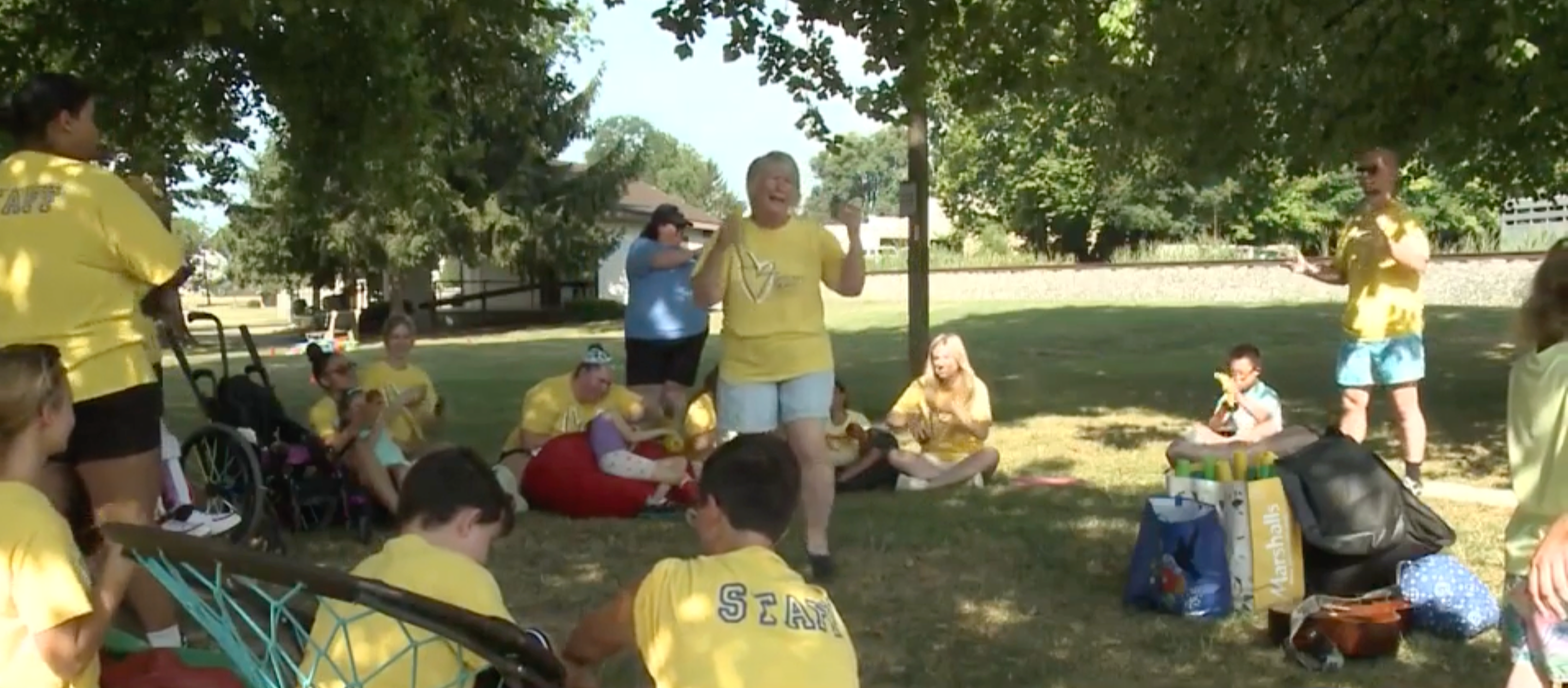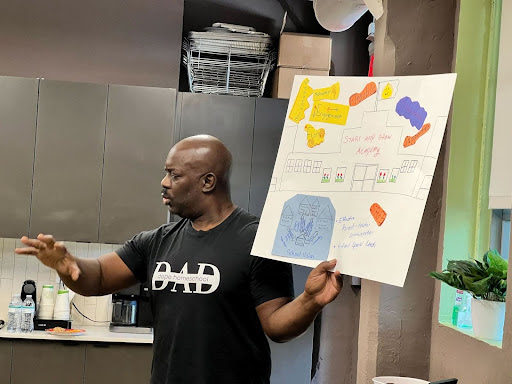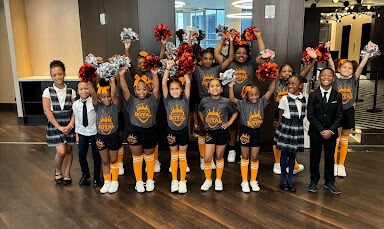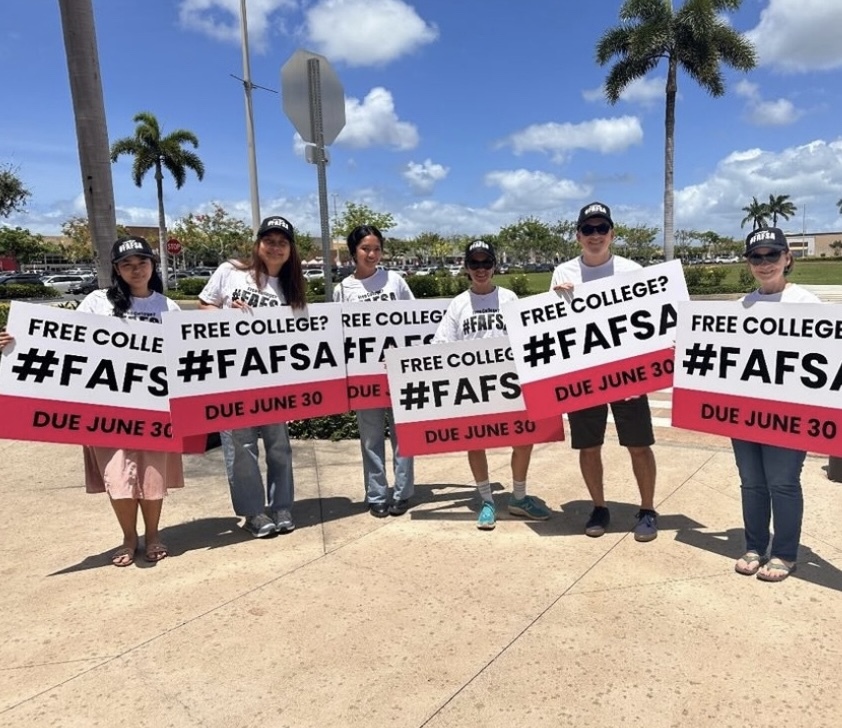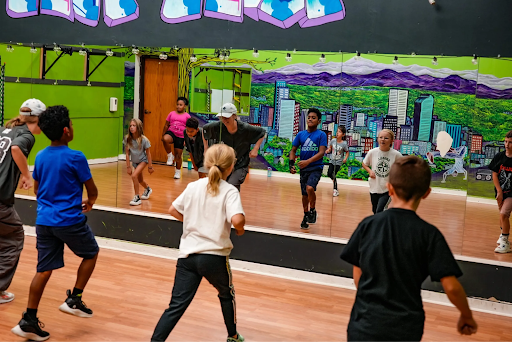Jump to: Top Tasks | From the Field | Key Resources | Moments of Resilience
It is week 140 of our new reality and across the country analysts and advocates are trying to make sense of last week’s elections. “There was a tendency in DC to think of the midterms as one, big nationalized event, when in fact the foremost race in many voters’ minds was a governor’s race–from which down-ballot dynamics flowed,” observed Dave Wasserman of the Cook Political Report.
By focusing on what didn’t happen–the anticipated “red wave” of Republican victories in the US House and Senate races that never materialized–there is a risk that we miss what did happen: a “purple wave” of support for both Democratic and Republican gubernatorial candidates who stood up for sensible, constructive policy change that put kids and families first in their states:
SUBSCRIBE
- In Colorado, Democrat Jared Polis won reelection by 16 points after securing universal preschool and standing up for charter schools, school reopening and educational accountability.
- In Georgia, Republican Brian Kemp–who was elected four years ago by a razor thin margin–won reelection by 8 points after a string of policy victories including a push to reopen schools early, a big expansion of tax credit scholarships and millions more in support for charter school facilities, which gave him the advantage on education in the race.
- In Connecticut, Democrat Ned Lamont won reelection by 13 points after being one of the strongest voices in his party for reopening schools, signing into law the biggest increase in charter school funding in a generation and announcing the first RFP for new charter schools since 2017.
- In Tennessee, Republican Bill Lee won reelection by a whopping 33 points after making education the centerpiece of his agenda: securing free summer camp for 200,000 kids, doubling facilities funding for charter schools and passing the most significant reform of the school funding formula in two decades. In his victory speech, he declared his intention to continue to make education his top priority.
The same pattern held true for new candidates, like Democrat Josh Shapiro who won his race for governor of Pennsylvania by 14 points in part by distinguishing himself with a full throated endorsement of school choice: “School choice and fully funded public education can coexist in Pennsylvania, so says the Democratic nominee for governor, Josh Shapiro. It’s a policy position that strays from his own party and aligns more closely with Republicans.”
Meanwhile, gubernatorial candidates playing cynical political games with education policy–like Beto O’Rourke, who’s closing argument in the Texas governor’s race was a call to end state testing–lost by double digits.
At a time when it felt like the loudest, most extreme voices had succeeded in taking over our politics, American voters stepped forward to make their more sane voices heard by putting constructive public servants back in charge in states across the country. “This week’s election results called into question the power of culture war education politics,” observe Laura Meckler and Anne Branigin in the Washington Post. Or as Tim Carney memorably put it in the Washington Examiner: “Nominating the craziest son of a b**** in the race is not a formula for winning governing majorities.”
Last week’s elections reinforced that good policy makes good politics and candidates in both parties that focused on constructive educational change thrived. Now, we must seize this opportunity to make sure that this purple wave turns into a wave of policy wins in the coming legislative sessions that will deliver the support and opportunities our kids need and deserve.
TOP TASKS
Prioritize state and local advocacy
When the dust is settled on last week’s election and all the votes are counted in the US House of Representatives races, no matter which party prevails it is clear that they will be working with one of the smallest House majorities in American history. This will make pushing through big education legislation unlikely if not downright impossible.
As 50CAN President Derrell Bradford put it in an election debrief hosted by the American Enterprise Institute last week, “The Covid spigot will be closed.”
That will compound the fears of district leaders as they look toward an approaching fiscal cliff as ESSER dollars run out in 2024. Edunomics Lab’s Marguerite Rosa predicted the danger last year: “It doesn’t seem to matter why funding drops—be it a result of steady enrollment decline, the arrival of a new more equitable state funding formula, a local levy failure, or in this case, when federal relief funding inevitably ends—a reduction of even 1 percent of funds wreaks fiscal havoc on most districts.”
This makes the work of local, student-centered advocates all the more essential in driving limited resources to policies and programs that will have the highest impact in rectifying the damage done to children during the pandemic.
We have a collective responsibility to ensure that the programs we know work–high quality tutoring and summer camps, the science of reading, pathways for a more diverse workforce and direct aid to families–are continued. Pandemic-era innovations that are the initial building blocks for the future of American education, from learning pods and career programs to the civic and community partnerships that enable education outside the schoolhouse, must be cultivated and expanded as well.
It will be up to state and local advocates, working round the clock at statehouses and school board meetings in the coming months, to keep the focus on kids.
THE TASK OF THE WEEK IS
Recruit, support and uplift Gen Z advocates
“Researchers say the 2022 election had the second highest voter turnout among voters under 30 in at least the past three decades,” reports Ashley Lopez for NPR. Yet, even with this success in youth turnout, this translates into only 27 percent of people under 30 actually casting a vote in the election. Clearly there is real progress but also much more work to do.

What’s the implication for the politics of education? Our best insight into Generation Z’s views comes from polling commissioned by Murmuration and first reported by Kevin Mahnken in The 74, which found that divisions on education policy were nearly as stark between Gen Z voters and older generations as they were between Gen Z’s left and right. Young Democrats, for example, support school choice by a 20% point margin; young Republicans have a favorable opinion of teacher’s unions by a 15% point margin. The traditional political divisions don’t hold and the extreme “culture war” approach to education issues is a particularly bad fit for this new generation.
All this suggests that local and national advocates will be well-served by making outreach and engagement of Gen Z a key priority. Derrell Bradford and Ned Stanley view these young voices as essential in our efforts to build the education system of the future, which is why they’ve ensured that each cohort of the National Voices Fellowship has featured young voices along with more seasoned communicators. “Their energy is contagious for the entire group,” Ned tells me, “Their proximity to the experience of schools and classrooms gives them an authenticity that can’t be countered.”
This is particularly important now, as the experiences of young people in school during the pandemic will be crucial guides as we debate the policies needed to ensure their recovery.
That’s why we’re doubling down on our support for Gen Z. In 2023, the National Voices Fellowship will be expanding to a second fellowship made up solely of people who were high school and college students during the pandemic. We’re excited to share more–and interview any candidates you recommend–in the coming months.
THE TASK OF THE WEEK IS
FROM THE FIELD
How did education advocates do in last week’s elections? Below is the update Jonathan Nikkila, the Executive Vice President of the 50CAN Action Fund, shared with the Action Fund’s supporters last week. Jonathan and team are celebrating two records: involvement in nearly 100 political races across the country and winning 75% of them.
“The highlights of the Action Fund’s 2022 electoral activity:
-
- In New Mexico, advocates recruited and supported four new elected members of the 10 member Public Education Commission, a statewide charter school authorizer. Combined with the 2020 elections, the team had a hand in electing 7 of 10 members. This was accomplished through excellent candidate recruitment, a fundamental staple of any strong political operation.
- In Tennessee, legislators made tough votes in favor of educational choice and a new student-based funding model, so it was critical that advocates stood by their friends this election cycle. The bipartisan effort resulted in the team winning 17 of 19 competitive seats. In a joint effort with TennesseeCAN Action Fund’s coalition partners, this resulted in gaining five State House seats for educational choice supporters in the cycle, including defeating two incumbents who opposed school choice in the primary.
- In Georgia, the team used their grassroots organizing and political mobilization skills to make 45,486 touches on behalf of candidates in the primary and general elections through doors and phone calls. These were conducted by 46 highly-skilled parent advocates who were able to effectively build support among other parents as a result. They helped make a difference in two tight elections–one for a Democratic champion and the other for a Republican.
- In Delaware, between school board and legislative elections, 13 of the 18 supported candidates won their elections. The highlights included defeating an incumbent in one school board race and doing polling this fall that identified a legislative champion as highly vulnerable in the general election. The team conducted independent expenditures on his behalf and he won one of Delaware’s most narrow races. That’s exactly the kind of data-driven political advocacy the 50CAN Action Fund aims to bring to every state in the network.
- In Hawaii, the team conducted a thorough survey of candidates, hosted the first debates of the gubernatorial election, helped candidates through door-to-door engagement and worked closely with the campaign of Governor-Elect Josh Green.”
To learn more about the 50CAN Action Fund network, visit their website or contact Jonathan directly.
Key Resources
50CAN President Derrell Bradford spoke on an AEI panel discussing the implications of the midterm elections on our education system.
Last week’s episode of Emily Hanford’s Sold a Story podcast featured GeorgiaCAN Parent Fellow Missy Purcell. The final episode of the podcast airs this week.
Urban Institute writes on how the country can best support young parents, finding that we need to take a collaborative, cross-sector approach.
Fordham is out with a new study on differing expectations in public, charter and private schools. One headline: teachers in charter and private schools are more likely to believe their students will complete four-year degrees.
The Manhattan Institute’s new report focuses on redlining and educational boundaries, finding that open enrollment districts are often not working as intended due to logistical constraints like transportation preventing many families from accessing schools.
According to polling from the Walton Family Foundation and Stand Together Trust and reported in The 74, a majority of parents want control over their children’s educational experiences. Over 70% of parents believe that learning should happen everywhere.
Moment of Resilience
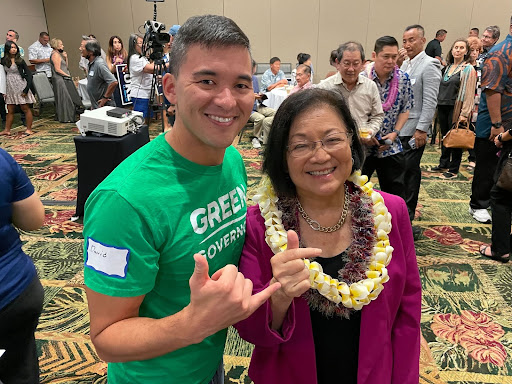
HawaiiKidsCAN Action Fund Executive Director David Miyashiro poses with United States Senator Mazie Hirono (D-HI) at an election night party after a day that saw a number of the Action Fund’s legislative champions reelected. After a string of policy innovations during the pandemic, Hawaii saw smaller drops on the 2022 NAEP than nearly any other state. Now, it will take the momentum into the 2023 legislative session with the opportunity to do even more for kids.


